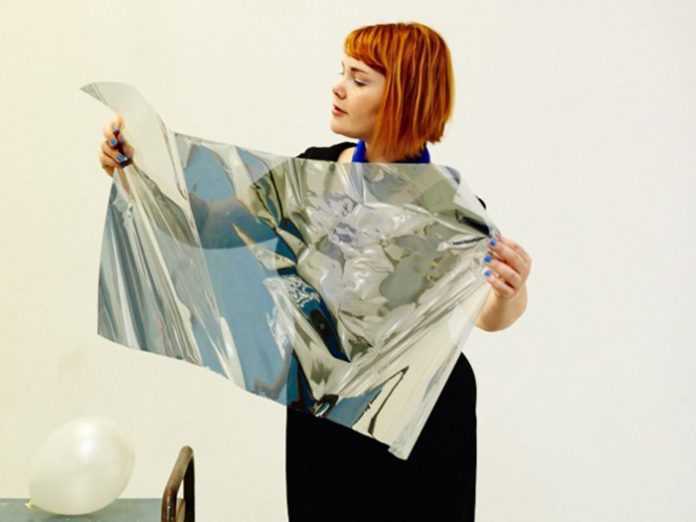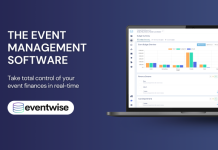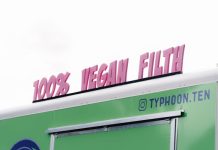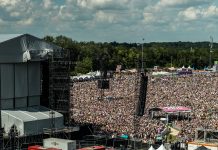Sally Golding is an artist and curator who has run experimental audiovisual, sound art and performance events in both Australia and the UK, as well as having presented curatorial programmes and her own performances across the globe. She is the co-director of OtherFilm in Australia, and the Director-Producer of Unconscious Archives based in London, set to take place in festival format from September 20 – 30 2017 at the Austrian Cultural Forum London, Cafe OTO, Corsica Studios, and Close-Up Film Centre.
I ran my first experimental arts event when I was just 17. I’d come from a suburban country town in Queensland, Australia, and when I first experienced the underground arts scene of Brisbane I was blown away by the incredible art and music people were making in their bedrooms. I wanted to help celebrate it and ‘get it out there’.
Together with Tara Pattenden (now one of the artists on my current festival bill) we took over a five-storey building in which the occupying business had gone into liquidation and gave us permission to host an event which featured club music, experimental film, circus and I can’t even remember what else. We screen printed posters and artists from the community pitched in to clear the building, loan equipment and help set up.
It was so well attended that at some point during the event the street became blocked with our party-goer’s cars, the drainage system broke as there were too many people crammed into the building and water started leaking into the basement where the club acts were in full rave mode. The police came to investigate, the leaseholder got drunk and locked themselves in an upstairs room, and I climbed up the fire escape to have a 10 minute personal breakdown before coming back down to start managing the glorious mess – which no one else seemed to think was much of a problem except for myself.
These undertakings also resulted in us driving somewhat spontaneously for over twenty hours from Brisbane to Adelaide, and then proceeding to engage an internet radio organisation (internet radio being progressive for that time) to help us meet artists and run an event in their city. We made stickers and graffiti spray painted lamp posts with the event details, and hosted a collaborative live night in a cafe-bar with artists from each city presenting and swapping ideas. These days I run events where the cops don’t generally turn up, and hopefully the events are much more well planned. They do, however, still present endless issues to keep an eye on, and the experimental arts scene lends itself to new challenges and tasks which take years of specialist experience to get right.
As an artist working in live film performance, sound art and installation I’ve developed my practice over the last 13 years in parallel with curating – which is an important aspect of how I research art and how I engage with arts communities. In live arts arts it’s important to experience the artwork directly (which sounds obvious, however there is a stronger need to achieve this if you live in a geographically distant part of the globe from the art movements with which you are trying to connect) and it is this aspect of ‘liveness’ which I am fascinated with – the way in which the audience integrates and responds to the acts presented within the space, and the community and ideas that are generated by bringing together artists from around the globe with complementary and sometimes contrasting artforms within the same event.
I’ve always considered the audience part of the event and when I programme I think of the trajectory of experience that this will bring. I studied film and television production, photography and archiving, and I’ve worked in arts administration, arts and special needs teaching and as a mentor to artists within official government and residency programmes, as well as making my own artworks in complex audiosvisual systems delivered through installations and live performances. I’ve performed in a hacker community inside a scaffolding construction within a carpark in India where I was eaten alive by mosquitos whilst I stood stock still to deliver my performance of projection onto my own body, and on a moving historical train travelling through rural country Australia in 40 degree plus heat with fragile 16mm film projectors strapped to the luggage racks projecting onto the carriage doors, and by contrast I’ve also performed at the Tate Britain and the Serralves Contemporary Art Museum, Porto – the last one with access to a golf buggy and my own dressing room.
In the experimental arts community I’ve spent countless hours of my life troubleshooting technical problems and gauging how to deal with the personalities of people encountered within the industry – and for this I have earned a reputation amongst artists and industry partners as being a curator who applies extreme attention to detail in technical and event management. Importantly, this has helped me to forge new partnerships and increase the capacity for the better staging and better promotion that these socially fascinating, technologically diverse, and culturally important artworks deserve.
The experimental arts scene is more than just the germination ground for ‘bigger things’, like getting an agent to promote and manage your act, or a respected record label to release your work; it’s a dialogue where some of the most progressive art takes place in a space between artistic discourse, politics, sociology, and technological development. Understanding that the intricacies of staging and marketing are technically, physically, and socially challenging is important to the success of delivering a great experimental arts event – in which the artist should feel supported to achieve their vision and the audience should feel actively encouraged to become involved in the artwork being presented to them.
The industry is fickle; agencies can drop an act before they have even had a chance to find their footing if they don’t bring a high turnover of bookings within a certain timeframe, and the arts community puts in a lot of hard (modern) labour to support the presentation of arts, often on very little money and their own resources. So where do the two meet and how do we raise the platform so that artists are better supported and can see the outcomes and experience the benefits that lead to a sustainable practice?
Artists do A LOT; they are expected to be grant writers, researchers, technicians, and their own PR agent – including delivering constant social media marketing, and generally being a public muse including posing for press shots and giving interviews if requested. I’ve seen and personally experienced the positive effects of engaging in an active arts practice which can break boundaries and connect you with the world, and I’ve also been privy to the art industry’s demanding pressures resulting in burnout. I want to see experimental artists get more recognition and more opportunities in return for their effort of taking part in events, and I try to raise the platform for artists by mixing recognised and established artists with emerging and unknown acts, and focussing on supporting women artists who may be less likely to receive mentoring or to be programmed as as a result of being overlooked or unknown in what has traditionally been the male dominated music scene.
Unconscious Archives started out as an event series dedicated to the specific curatorial theme of programming expanded cinema alongside sound art performances. UA2017 is our first proper iteration of a festival and staging diverse art forms is even more of an important thread in attracting media coverage and audiences. This year’s festival will see transgender DJ Ziúr from Berlin launch her new electronic music album on the Planet Mu and Objects Ltd. label at our club night at Corsica Studios, Spanish paracinema artist Esperanza Collado construct a performance just from the physical building specifications of the venue itself at Close-Up Film Centre, Canadian artist Myriam Bleau show off her artist built technologies that make music by riffing off both classical modes of composition and DJ culture at Cafe OTO, and UK artist Stephen Cornford alter the image sensors of cameras to directly affect and alter how consumer technology behaves with an installed work at the Austrian Cultural Forum London.
With over thirty international artists across three events and an exhibition, the festival already has more impact than the series alone could have achieved. The multi-arts approach has always been deliberate yet it is not cynical; it draws wider and therefore bigger audiences by default and it has always brought forth new and unexpected ideas which makes sense as great art is more than the definition of its own form or genre. After hundreds of engagements with staging other artists’ work as well as my own I have found that you can’t judge audiences or rule out their desire to engage with what may be perceived as difficult or extreme art. People are hungry for new content and willing to be surprised by what they see.
After six years running independent events based on tickets sales with venue partners Cafe OTO and independent arts organisation Apiary Studios and building up a strong core audience, for this year’s Unconscious Archives Festival we did a lot of partnership and stakeholder development and gained support from the Arts Council England through their Grants for the arts fund, as well as the Austrian Federal Chancellery, and we developed all this in association with our cultural partners the Austrian Cultural Forum London (ACF) who have helped us to make this into a much larger festival than we originally perceived. This was all kickstarted by an incredible opportunity instigated by the ACF and funded by the Austrian Federal Chancellery for myself to travel to Austria and meet over 20 artists and organisations in their studios in order to research first hand new artists and artworks to bring to UK audiences – enabling us to develop this year’s festival additionally with a cultural exchange focus. After seeing the value this has brought to partner development and to the programme content itself, ideally with each festival iteration I would seek a new research development opportunity like this which enriches what the whole experience can bring.
London is a tough city in which to run events as there are always competing forums and it is an even tougher city in which to stage a festival. We don’t have the level of funding support and the same way of engaging with city based festivals as we see in European cities – such as audiences dedicated to attending multiple nights and days in a row within a traditional festival model. Therefore we decided to break up the events over a longer time span rather than running them consecutively. So for UA2017 with some great resources under our belt, our small team have set to task to test and liberate the boundaries of experimental art.
With representation from media partners The Wire, Resonance FM and The Quietus, as well as a focus within our budget on marketing and PR, we are on track to increase our outreach and grow our audiences. Next time I’d like to designate even more budget for advertising and schedule even more lead up time for marketing, and also build in more time to deal with agents who are out to negotiate for the highest fee and don’t always have the same motivation as you to move schedules ahead. The UA2017 team are all artists and artworkers working on a freelance basis for the festival, so online project management tools such as Trello have been essential to enable collaboration and to effectively track and achieve goals.
Supporting the experimental arts scene is to me clearly a system of community building and teamwork. For now it seems enthusiasm is the incurable and infectious trait that we need to sustain experimental arts practices – which we hope to see reflected in our media and audience engagement.
Unconscious Archives Festival 2017 is supported by Arts Council England, the Austrian Federal Chancellery, and the Austrian Cultural Forum London.






